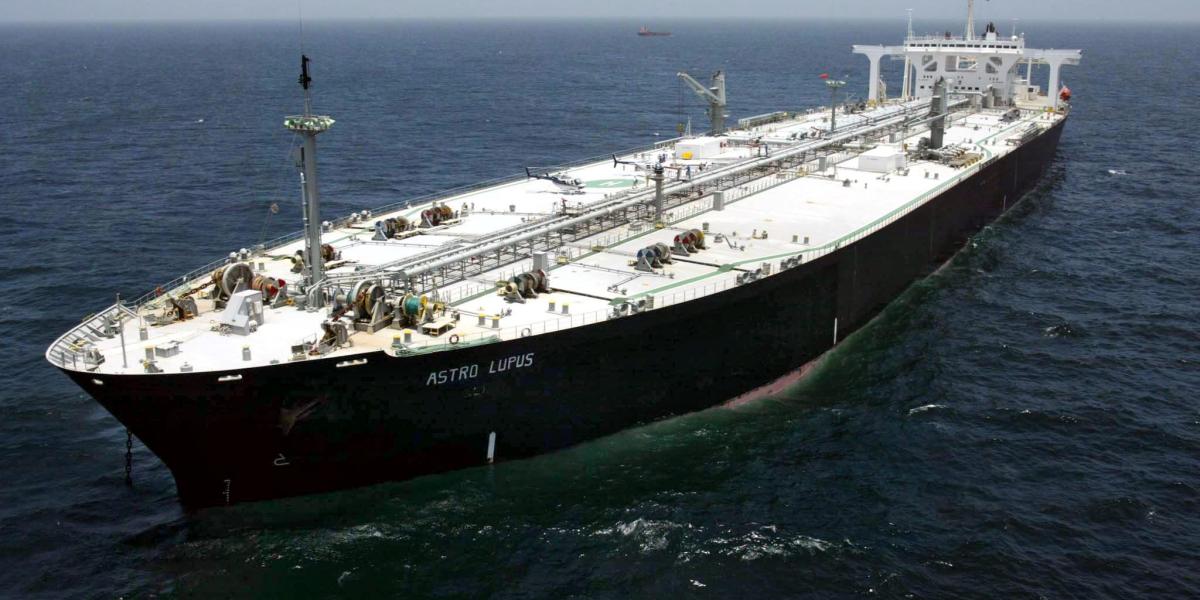

From the frigid waters of Russia’s Baltic Sea to the Pacific shores of Vladivostok, dozens of tankers that previously moved Moscow’s oil are now sitting empty and idle.
The vessels have become inactive after being hit with US, UK and European sanctions that began ramping up in Oct. 2023. Some were targeted for breaching a Group of Seven price cap on Russian oil exports, others for belonging to the state tanker firm Sovcomflot PJSC. Another batch were designated for the environmental risk they pose.
The idle ships prove that the West has levers — if it chooses to pull them — that can disrupt the transportation of Russian oil. Almost all of the 53 ships that have been sanctioned since Oct. 2023 have failed to collect any cargoes since. Those few that have loaded then sought to hide their subsequent activities, resorting to turning off automatic tracking systems and switching cargoes from one ship to another while hidden from view.
However, the fact that freight rates — including the portion directly attributable to sanctions — are falling, is the critical evidence that sanctions are disrupting tankers but they aren’t really raising Russia’s costs for individual cargoes.
This story uses tanker tracking data compiled by Bloomberg to provide an explanation of the effect those sanctions have had so far.
The Sanctions
The first to act against the Russian oil tanker fleet was the US Treasury’s Office of Foreign Assets Control.
Its initial measures against individual ships were imposed back in October, with a further seven sanctioned by the end of that year. It sanctioned a further 32 this year but removed one from its list.
The first ones were targeted because they made use of US-based service providers while transporting oil of Russian origin that was sold at a price above the G-7 cap of $60 a barrel. Then, in February, shortly after the second anniversary of Moscow’s invasion of Ukraine, 14 more were designated for being owned by Sovcomflot.
The UK was next to step in, targeting four vessels on June 13 in a bid to curtail the activities of the so-called “shadow fleet” – a large group of tankers side-stepping sanctions by moving largely out of the orbit of Western jurisdictions.
This marked a change in the west’s tactics: ships were sanctioned for the first time explicitly for belonging to the shadow fleet.
The European Union was the last to act, sanctioning 13 oil ships less than two weeks after the UK, on June 25. It too designated shadow-fleet vessels.
In total, 41 of the 53 sanctioned tankers are classed as crude or crude/products tankers. That equates to about 7.5% of the fleet of vessels observed loading Russian crude since the start of 2023, ship tracking data compiled by Bloomberg show.
Tanker Movements
The sanctioned ships have struggled to trade as they normally would.
Just three of them have loaded cargoes since being designated, vessel tracking data compiled by Bloomberg and port agent reports show.
The idle ships have congregated at several locations around the globe.
Six crude oil tankers are anchored in the Baltic Sea, home to Primorsk and Ust-Luga, two of Russia’s largest export terminals. The ships are clustered off the port of Ust-Luga on the southern coast of the Gulf of Finland.
The first to arrive there was the Kotlas, which first got to Ust-Luga on Dec. 8, a week after it was sanctioned by the US. It has since been intermittently sailing around the Gulf of Finland for seven months, quite possibly to keep its hull clean.
Others joined it after being added to the list and none has loaded cargo since. One, the Robon, is well known to watchers of Russia’s shadow fleet, after being observed last year in the Gulf of Laconia off Greece transferring its cargo to another ship while providing a location to digital tracking systems that placed it a few miles away.
Four of the six are owned by Sovcomflot. The others are operated by unknown companies, a hallmark of shadow-fleet vessels.
Another four were last seen around the exit of the Black Sea, home to Russia’s other main western oil export port at Novorossiysk. A fifth was anchored close to the port while a sixth, the Viktor Bakaev, left the region in early July, heading for the Baltic. Like the others, it remains empty.
These tankers all stopped giving signals to automated tracking systems upon entering the Black Sea.
Although the ships in the Black Sea were last seen in February or March, they are unlikely to have left the region. Vessels are required to activate their automated tracking systems when traveling through the Turkey’s Bosphorus and Dardanelles straits and would have been picked up at that point had they lefft the Black Sea.
Anchored in the waters off the port cities of Vladivostok and Kozmino, a further five ships — all bar one owned by Sovcomflot — have remained idle for months. A further two are idling with no indicated destinations between the coasts of Russia and Japan.
Two of them, Ligovsky Prospect and Kazan, were sanctioned in November, and neither they, nor any of the others, have loaded a cargo since.
Chinese shipyards have been kept busy with sanctioned tankers.
Five of the six tankers seen off the coast of China are either at, or have recently left, repair yards there.
Four more are idling near the coast of South Korea. One has been in the area since being sanctioned in January. The other three joined it after delivering cargoes that they loaded before being sanctioned.
None has loaded a cargo since being targeted.
Off Port Said, at the northern end of the Suez Canal, eight sanctioned tankers have gathered. They have been inactive since arriving.
All but one is managed by Hennesea Holdings Ltd, sanctioned by the US Treasury in January. The other, the Andromeda Star, was targeted by the EU in June.
The position signals from six of the eight vessels indicated they were on the tarmac at Beirut airport at some point in the past two months. The AIS tracking system is susceptible to hacking.
Swerving Sanctions
Just three of the 53 sanctioned tankers have definitely loaded cargoes since being added to the list.
The SCF Primorye in April, the Bratsk in May, and the Belgorod in June each loaded about one million barrels at Novorossiysk and were picked up AIS tracking as they exited the Black Sea.
The SCF Primorye is now making its way toward the Chinese coast after transferring its cargo to the Ocean Hermana in the Riau archipelago, east of Singapore, last month.
The Bratsk and the Belgorod both disappeared from AIS south of India. One was spotted off Sohar in Oman at the beginning of July by TankerTrackers.com Inc., which specializes in interpreting satellite imagery to spot sanctions-busting tankers.
It is possible, however, that one other vessel, the NS Spirit, may also have taken on a cargo, although this may have happened in the days before it was sanctioned by the EU.
It disappeared in the Black Sea on June 15, 10 days before it was named. It reappeared on July 3, close to where it was previously seen, but with an updated draft indicating that it had loaded cargo. It then passed through the Bosphorus and appears to have discharged its load at Maramara Ereglisi in Turkey.
These maneuvers could give an indication as to how Russia is seeking to put the sanctioned fleet to work, and the contortions that involves.














